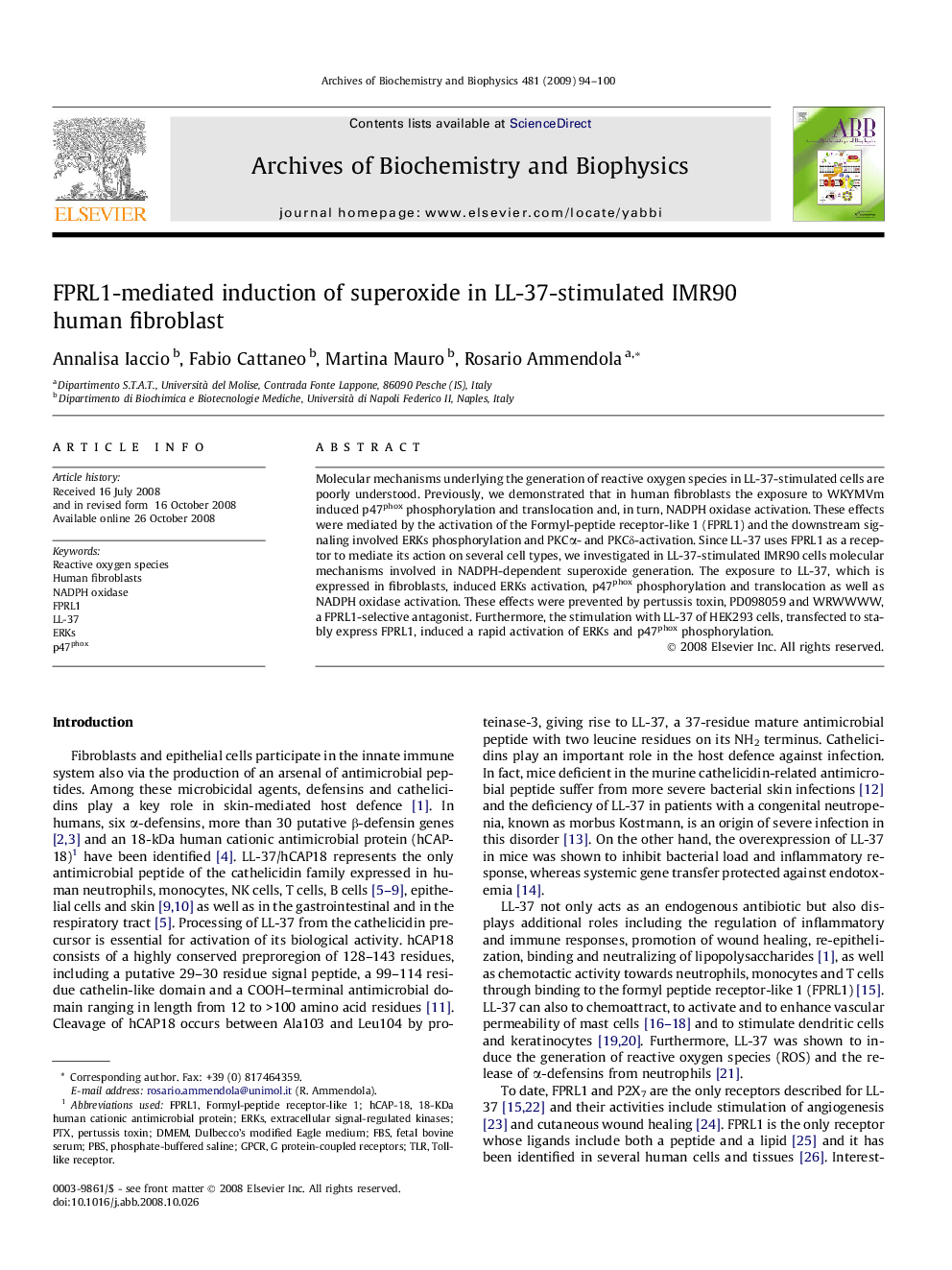| Article ID | Journal | Published Year | Pages | File Type |
|---|---|---|---|---|
| 1926456 | Archives of Biochemistry and Biophysics | 2009 | 7 Pages |
Molecular mechanisms underlying the generation of reactive oxygen species in LL-37-stimulated cells are poorly understood. Previously, we demonstrated that in human fibroblasts the exposure to WKYMVm induced p47phox phosphorylation and translocation and, in turn, NADPH oxidase activation. These effects were mediated by the activation of the Formyl-peptide receptor-like 1 (FPRL1) and the downstream signaling involved ERKs phosphorylation and PKCα- and PKCδ-activation. Since LL-37 uses FPRL1 as a receptor to mediate its action on several cell types, we investigated in LL-37-stimulated IMR90 cells molecular mechanisms involved in NADPH-dependent superoxide generation. The exposure to LL-37, which is expressed in fibroblasts, induced ERKs activation, p47phox phosphorylation and translocation as well as NADPH oxidase activation. These effects were prevented by pertussis toxin, PD098059 and WRWWWW, a FPRL1-selective antagonist. Furthermore, the stimulation with LL-37 of HEK293 cells, transfected to stably express FPRL1, induced a rapid activation of ERKs and p47phox phosphorylation.
